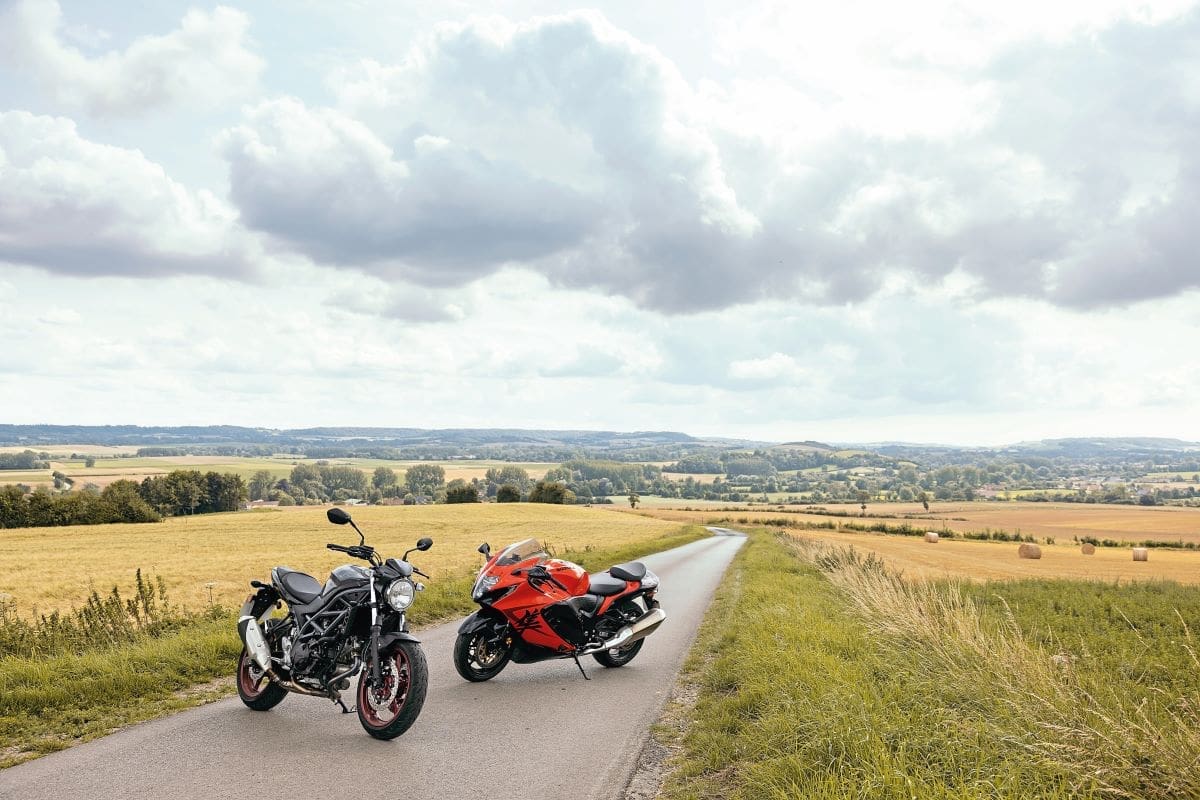
Words: Dave Manning / Ross Mowbray Photography: Gary Chapman


While undertaking a motorcycling holiday over the Channel, most folk blast away from Calais to head east through Belgium and Holland and on to Germany, or else directly downwards to the south of France, the Pyrenees or the Alps.
But many of us don’t have the time for that, or to use up valuable holiday time just riding autoroutes. So, given that northern France is only a 30 minute train trip away, it seems sensible to consider the areas that are close to the Channel ports and, especially, the Chunnel terminal in Calais.
Clearly, there’s a huge amount of history in the area, thanks in main to the two world wars of the last century, and many folk visit the battlefields and cemeteries of the First World War. But there’s also lots of history that predates the conflicts of the 20th century – and I’m not just talking about the Franco-Prussian in 1870, there’s lots of incredible architecture from before then, as an example. But, as motorcyclists, we were keen to know if there are some good roads to enjoy, and some nice scenery to take in at the same time. Internet searches are great to find out information, but nothing is as much fun as actually experiencing things yourself, so we went to find out…
Suzuki Hayabusa 25th Anniversary

Suzuki’s big, fast sports tourer, the Hayabusa, is perhaps an obvious choice if you want to cover a lot of miles in not much time. And while this was certainly at the forefront of our thoughts while we were discussing heading to the Somme region of France, there was also the fact that 2024 saw the mile-munching GSX1300R celebrate its 25th anniversary. Indeed, the bright orange ’24 version of the Busa that you see here is its anniversary plumage.
That bright orange, and the 25th logos, rear seat cowl and gold-coloured components (the chain adjuster blocks, front brake rotors, and the drive chain which also has the Hayabusa ‘kanji’) and the laser etching on the exhaust cans bring some exclusivity to the 2024 model, plus a 400 quid loading on the price, although given that this magazine hits the shelves marginally before the end of the year, it is unlikely that you’ll be able to buy the 25th anniversary model from your local Suzuki dealer now. But the standard third generation Busa is still in the factory line-up and, aside from the cosmetics, is identical to the anniversary version.
I whipped off the rear seat cover and fitted the standard pillion perch in order to be able to strap on my faithful Oxford tail pack, containing just enough for a couple of nights away, and headed down to Folkestone to meet up with Ross and Gary, with an overnight stay before an early train under the Channel.
I ran a Busa as a long term machine a few years ago, and I still find the bike to be a very comfortable place to spend time. Like a comfortable office chair, it’s a really nice place to do business. Fast business.
Motorway miles down to Folkestone were clicked off in speedy comfort, the easily-usable cruise control preventing an unconscious rolling-on of the throttle and steadily increasing speed, keeping me (and my licence) safe and giving superb fuel use at legal speeds.
Given the long-legged high speed abilities it has, the big GSX also behaved impeccably when we started exploring the lanes of northern France, whether they be the fast and flowing (and astoundingly quiet) rural roads between Albert and Arras, or the congested and cobbled streets of Amiens, the super-smooth Suzuki carried me in unflustered luxury. The big inline four is the epitome of smoothness, and the ability to pull high gears from really slow speeds adds to the flexibility, meaning that you can pay more attention to the road and scenery about you. That said, with the up-and-down quickshifter, it’s hardly a chore to change gear…
While the closeness of seat to pegs does constrain comfort a tad, especially for those who’re longer in the leg (Ross), the low slung seat and low centre of gravity make it super easy to scratch around nadgery country roads and thread through busy urban thoroughfares with great ease. Even standing traffic on the M2 and M25 on the way home was dealt with, the Busa disposing of all traffic with aplomb. In fact, the only point at which the SV proved more agile was during photoshoots, when the Busa was a tad more difficult to turn around in tight and narrow roads, purely down to the longer wheelbase.
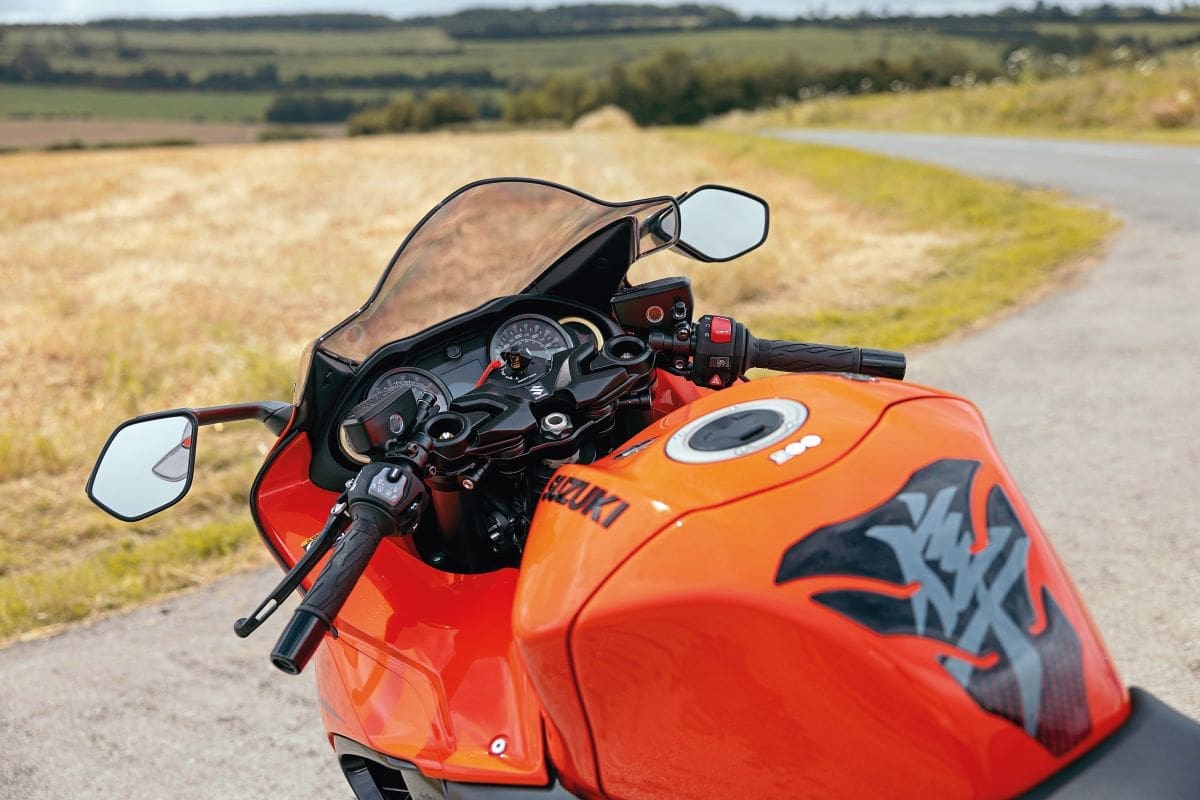
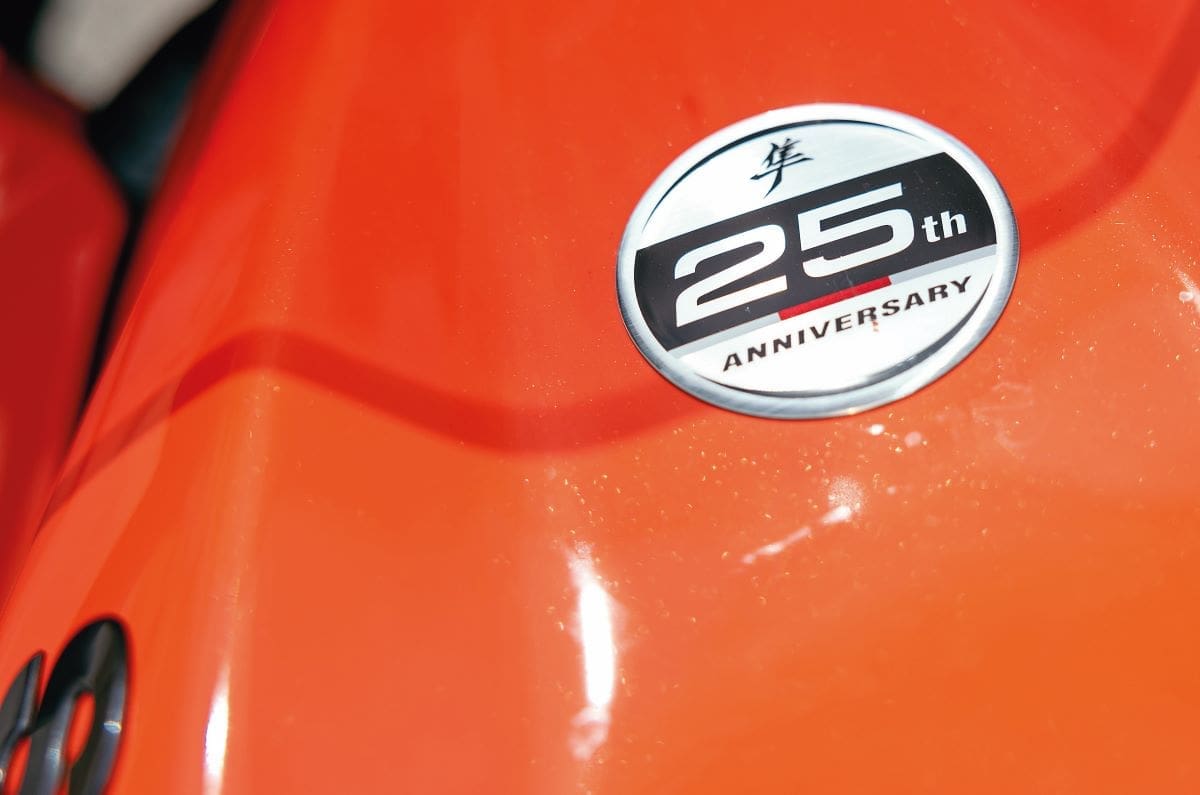
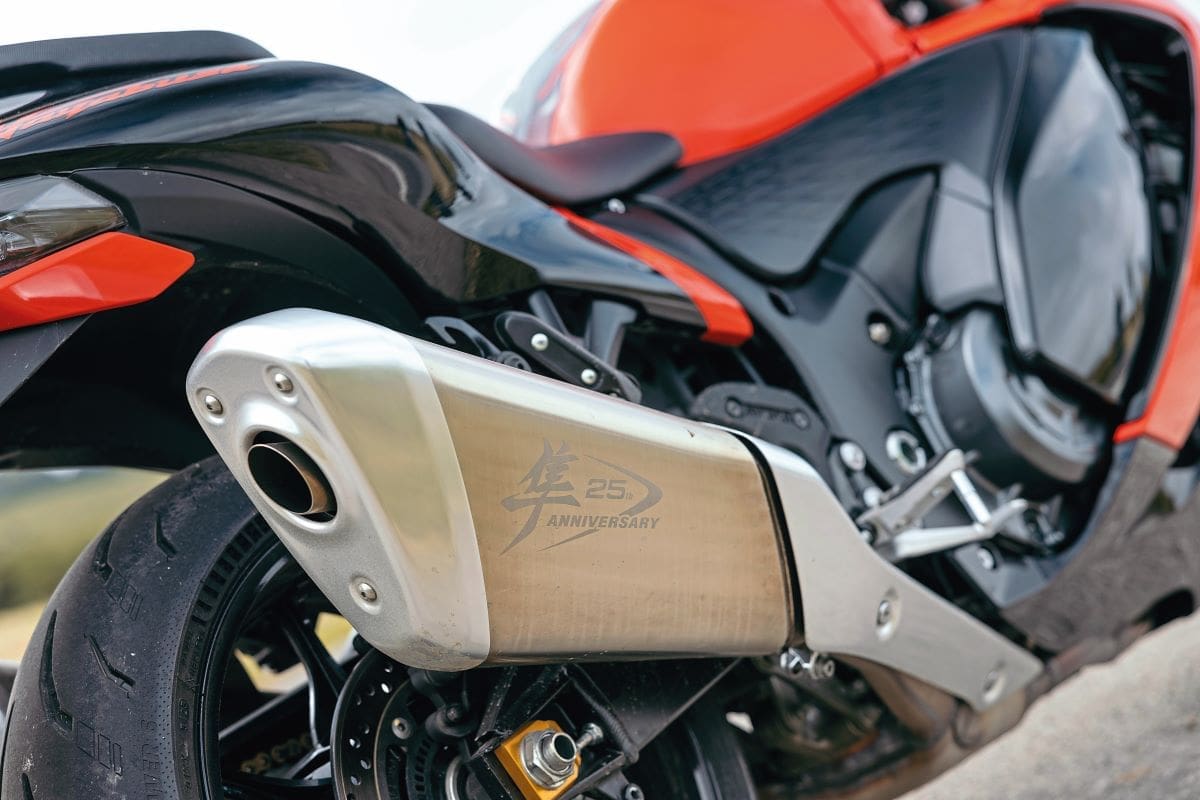
Second opinion – Ross
The Busa is an icon. That word is thrown around far more frequently than it should be, but there’s no doubt that ballistic missile from Hamamatsu will go down in the annals of history.
Loved by speed freaks far and wide, the ‘latest’ incarnation sticks true to the ethos of the original – big power and instantly recognisable aerodynamic bodywork – but gets more grunt, better suspension and a few choice electronic goodies.
It’s still a magic formula; lapping up the miles in a smooth, slick and seriously stable way with a whoosh of power only a twist of the throttle away. It pulls like nothing else – and it doesn’t even seem to matter what gear you’re in. The riding position’s not the most comfortable for my lanky frame, with its sporty ergonomics forcing your weight forward onto your wrists.
All is forgotten when you find some twisties to carve, but you’ll definitely know where you’ve been after a full day behind the bars. The only other gripe is its limited turning circle, which makes it a bit of a pig to turn around in tight spots.

Specification
Suzuki GSX1300R Hayabusa 25th Anniversary
Price: £18,999
Engine: 1340cc inline four cylinder, water cooled, four stroke.
Power: 140kW / 187bhp @ 9700rpm
Torque: 150Nm / 110lb-ft @ 7000rpm
Frame: Aluminium twin spar beam frame
Wheelbase: 1480mm
Brakes: (F) Twin Brembo Stylema calipers, 320mm discs (R) Single twin piston caliper, 260mm disc
Transmission: Six-speed/chain drive.
Suspension: (F) 43mm KYB forks, adjustable for spring preload, rebound and compression damping (R), KYB monoshock, adjustable for spring preload, rebound and compression damping
Wheels/tyres: (F) Cast aluminium wheel, 120/70ZR17 Michelin Power 6 tyre, (R) cast aluminium wheel, 190/50ZR17 Michelin Power 6 tyre
Seat height: 800mm (31.5in)
Tank: 20 litres
Fuel consumption: 49.8mpg (tested)
Weight: 264kg
Warranty: Three years
Contact: www.suzuki.co.uk
Suzuki SV650

While Suzuki’s successful mid-capacity vee twin is very similar now to how it was when it was first launched a quarter of a century ago, there have been a few tweaks along the way.
Although it now has a frame that is very similar in style to the original back in 1999, there was a period when it had an angular aluminium affair (the second generation version), and there have been some developments to allow the engine’s output to comply with environmental regulations, with fuel injection replacing the original carburettors and twin spark plug heads now being the means to light the fire.
Aside from that, there’s nothing new, and nothing in the way of complications or cost-inflicting additions either – no cruise control; no ride modes; no six axis IMU; no over-indulgent TFT dashboards; no clutter. Just pure, unadulterated fun. For all the changes in the world over the last 25 years, the ‘Ess Vee’ has remained a joyful puppy of a bike – happy to please, keen to perform. It still has exactly the same appeal that besotted me when I first rode the bike (both naked and faired versions, back-to-back, over about a fortnight) in its launch year. So much so that, when I was made redundant and went freelance in 2014, I sold my supermoto and bought a damaged-repairable SV to use as daily transport. I still have it.
And, yes, I’m also a big fan of the latest iteration of the model. I like the fact that it’s simple, it’s a pleasing antidote to tech overload and switchgear that confuses and befuddles. That’s not to say that the new version hasn’t had any intervention or upgrades for even easier use though.
The start button is now a one-touch affair (a single press, no need to hold, the starter will cut out as soon as the engine starts); there’s a Low RPM Assist to help prevent stalling (and that makes riding at or below walking pace really, really easy); and the clocks now display digital speed and rpm (the originals were analogue), as well as coolant temperature, trip and odometer, as well as a clock and gear position. The clocks are understated, yet super-easy to read – no clutter, no complications.
Those few small changes have certainly improved the bike, without taking away any of its playful character, or its varied abilities. Commuter, track day bike, Sunday toy, two-up exploring – all possible and undertaken with composure and ability, just like the SV had always been capable of. In fact, the only change that is of any real consequence is the sleekly-styled new seat. It might look much better than that on the earlier models, but it is nowhere near as comfortable, and is the one and only thing that caused any gripe or grumble on the blast to France and back home again, both for Ross and myself.
While many of us have been somewhat surprised that the SV remains in the range after the introduction of the parallel twin GSX-8S, the simple fact is that it’s a bloody great bike that hasn’t been replaced by the new twin, and while it hasn’t got the bells and whistles that the new machine offers, it is 900 quid cheaper, and it is still a very competent and hugely enjoyable bike to ride.

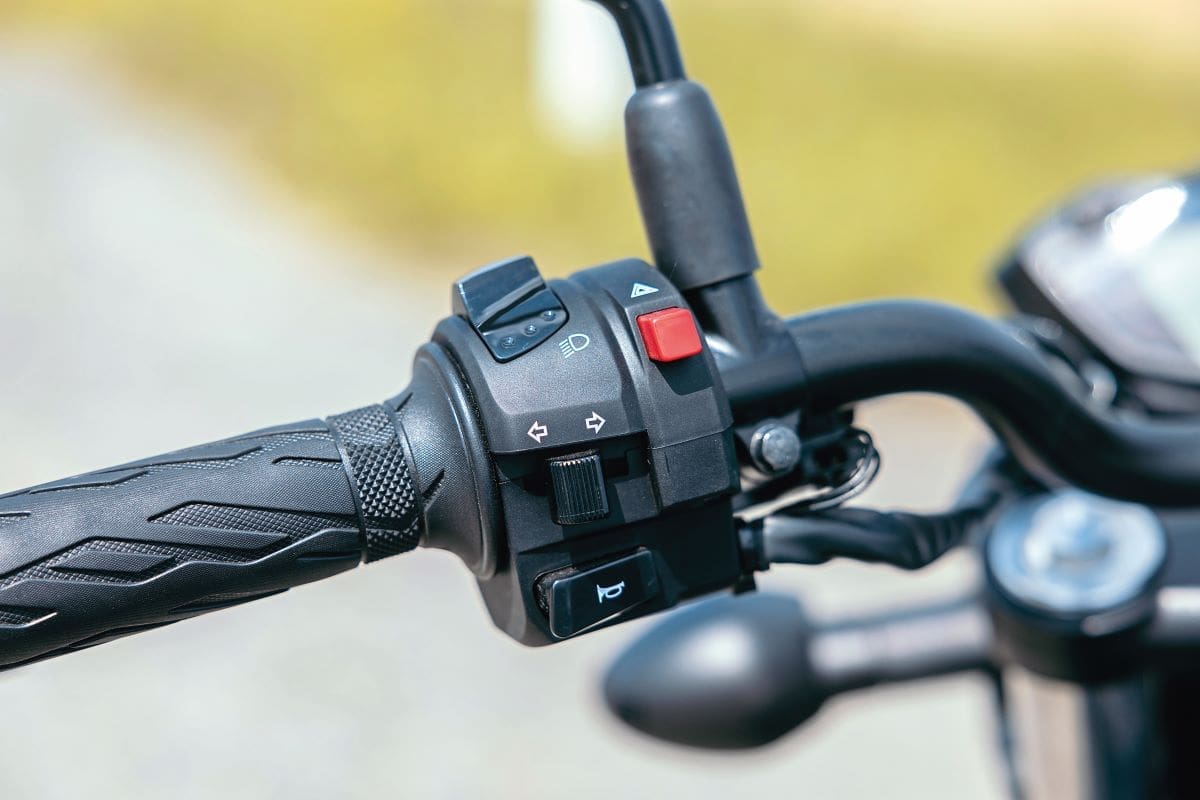
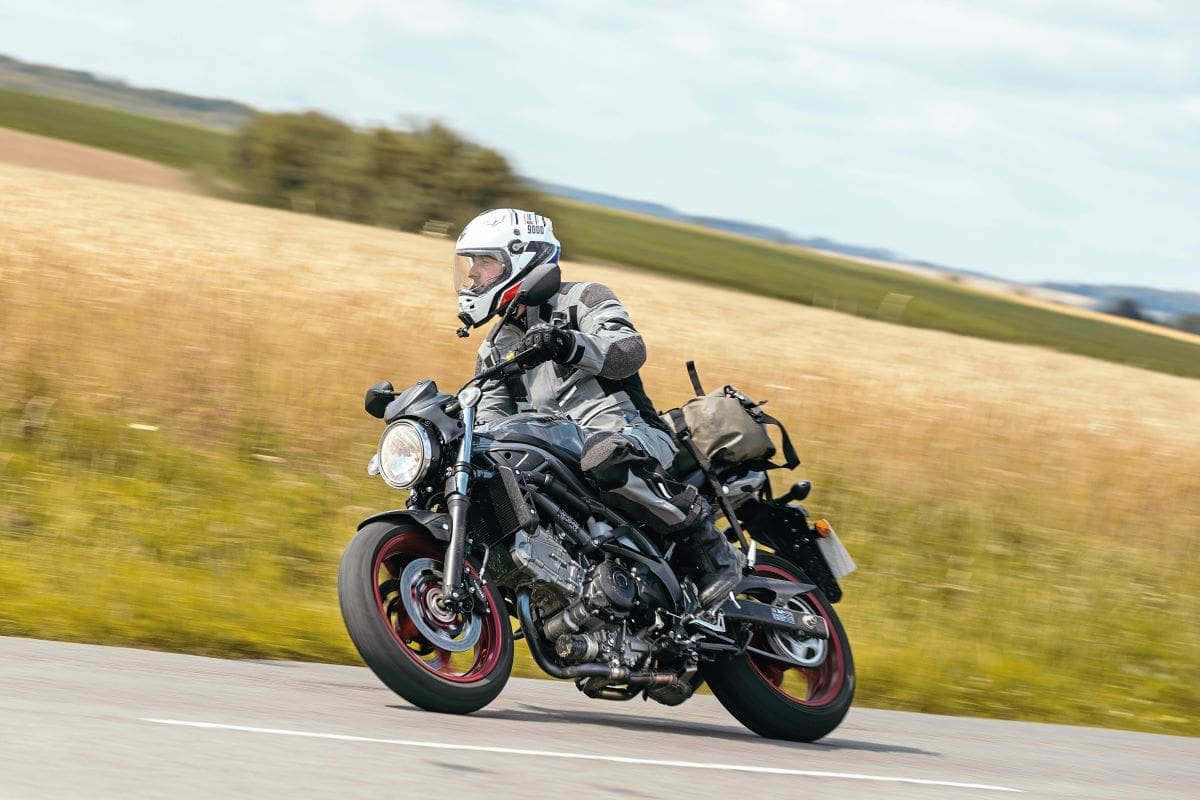
Second opinion – Ross
I love an SV. Sold in big numbers to commuters, couriers, customisers and competitive folks on the hunt for an affordable ride that’s up for anything, you could probably argue it’s even more important than the ground-breaking Hayabusa.
I’ve ridden a fair few of them over the years, and despite their excellent reputation I still manage to be surprised every time with just how good they are. They might feel a little old hat compared to some of the more modern competition, but I’ve no doubt that in the hands of the right rider, a little SV could show up its share of pricier and more potent bikes.
Its bulletproof V-twin motor’s the highlight; fun and flexible, with enough punch to whip past the fastest of traffic and pass the 100mph mark with room to spare – but it stops, turns and sounds pretty damn fine too.
It’s relatively compact, which has helped it find favour with new riders, but that aspect didn’t really work for me. Long distance comfort was not ideal for our three-day blast to France and back again. The surprisingly solid seat didn’t help much… but it’s easy to forget once you get it going, because the simple, stripped back and sporty SV650 is hard to fault when the pace picks up and the roads get more interesting.
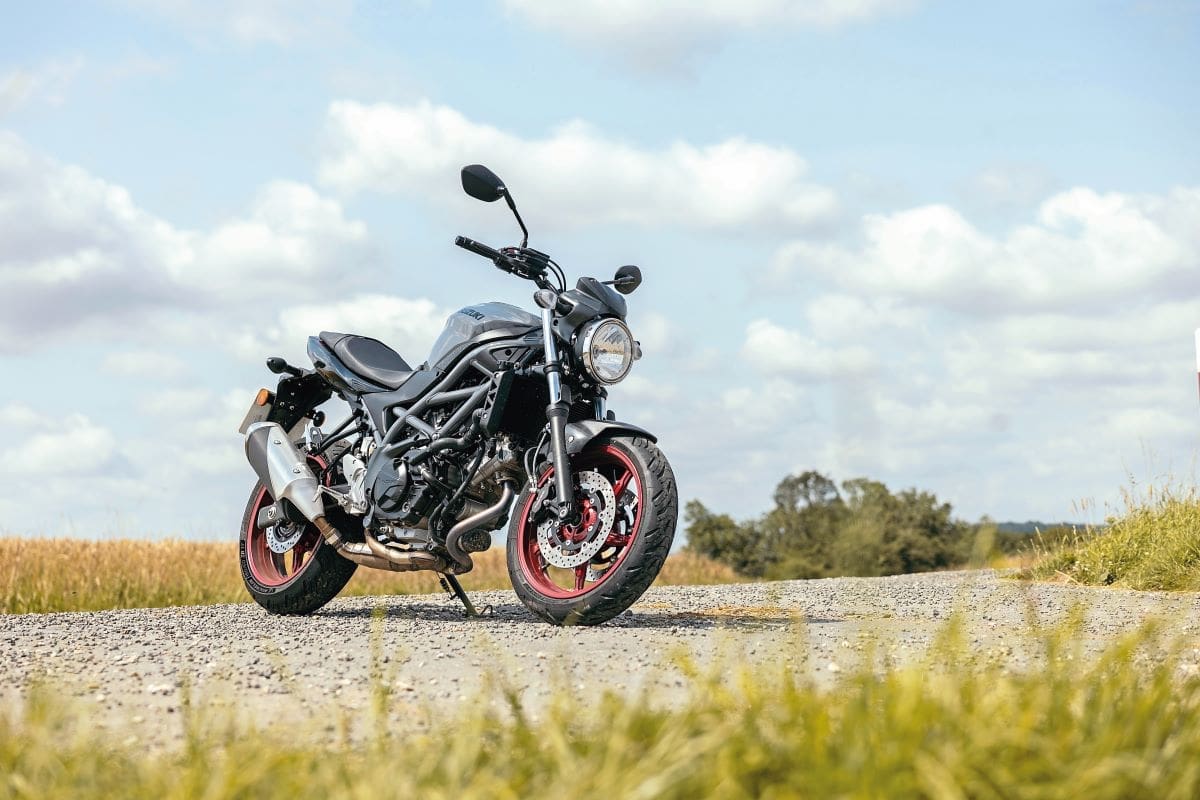
Specification
Suzuki SV650
Price: £7399
Engine: 645cc, DOHC, 90° vee twin, water-cooling, eight valves, 81mm x 62.6mm bore/stroke
Power: 72bhp (53kW) @ 8500rpm
Torque: 47.2lb-ft (64Nm) 6800rpm
Frame: Steel trellis
Wheelbase: 1445mm
Brakes: (F) Twin four piston Tokico calipers, 290mm discs, (R) single piston floating caliper, 240mm disc
Transmission: Six gears, chain final drive
Suspension: (F) 41mm forks, 125mm travel, non-adjustable, (R) monoshock, adjustable preload, 130mm travel
Wheels/tyres: (F) Five-spoke cast aluminium wheel, 120/70ZR17in Michelin Road 6 tyre, (R) five-spoke cast aluminium wheel, 160/60ZR17in Michelin Road 6 tyre
Seat height: 785mm
Fuel capacity: 14.5 litres
MPG: 68.9mpg (claimed)
Weight: 200kg
Warranty: Three years
Contact: www.suzuki.co.uk
The Somme

Clearly, there’s no shortage of history in the area that we visited for our two day jaunt.
The two huge conflicts of the 20th century have left their mark on the region, with in excess of 1000 military cemeteries in the region illustrating the vast scale of the conflict and the horrific price that the human race paid.
We paid a visit to just one, the Beaumont-Hamel Newfoundland Memorial, to the east of Amiens, dedicated to the men of the Newfoundland Regiment who had first seen action in Gallipoli being before posted to France for the first day of the Battle of the Somme.
The regiment attacked at 9.15am on July 1, 1916. After just 30 minutes of battle, more than 700 men – 86% of the regiment – were killed or injured. This was just half an hour of a four year war…
A visit to at least one of the cemeteries is vital to gain some kind of insight into the scale of trauma brought by the First World War, and it would be all too easy to spend many days touring the graves and sites in the area, providing your mental constitution is strong enough to withstand the scale of horror and loss. How anyone managed to survive, and also retain any level of sanity, is incomprehensible.

Getting there
While there are a number of ferry services that cross the Channel, perhaps the easiest – and most certainly the most time-friendly – way to get to France is by using the train through the Channel tunnel. With a Flexiplus ticket you not only get the chance to be boarded onto the first train with space (and pretty much each one will always have room for bikes), it gives you some flexibility… which is perhaps more important for the homeward leg. You also get entry into the Flexiplus lounge in Folkestone which, for us with an early start, proved an excellent way of making the very best of our time. Whizzing 75m underneath the surface of the English Channel at 100mph, while peeling away the arms of Morpheus courtesy of a takeaway coffee and croissant from the lounge, meant that we were happy to ride off the train and start making progress immediately we arrived in France.
Most folk leave Calais by jumping on the A16 or A26 to head east or south, but we meandered our way from the terminal, getting onto small roads as soon as we could, and heading cross-country through the Parc naturel regional des caps et marais d’Opale, enjoying the wonderful D224 from Landrethun les Ardres to Licques (where we stopped for a coffee), skirting past Coulomby to jump on the D191 to Nielles les Blenquin and then the blissfully quiet D128 Mierules and then a cross-country romp on theD108 Henoville to Auchy les Hesdin.
With time cracking on, we took a more focused direct route to the Beaumont-Hamel Newfoundland Memorial. Then, with hunger rising, we headed for our digs for the night in the wonderful city of Amiens, with tea alongside the Somme river looking up at the incredible cathedral, followed by a nightcap in a bar that could’ve been straight out of the pages of Sebastian Faulks’ book Birdsong.
The following day we followed the Somme west towards Abbeville (if you watch the video on the MSL YouTube channel you’ll see the river and the incredible fishing lakes and pools in the aerial footage), with some more exploring around the Parc naturel regional Baie de Somme Picardie before a blast back to the train for an evening ride to Blighty.

Extracurricular reading
Our trip was focused on what we read in the Michelin guide, although since returning I’ve read a couple of books that I really wish I’d read before the trip, as they’d have brought some fascinating insight into the area we visited, and also given some ideas of where else to travel.
Many folk have head of, and read, Faulks’ Birdsong, the moving story of a English front line soldier based around Amiens which, although fictional, is based on real events. It’s emotional, brutal and an essential read if you’re heading to Amiens.
Tom Isitt’s Riding In The Zone Rouge tells the story of the first long distance cycle race held in mainland Europe after the First World War, with Tom (who, incidentally, you may recognise from his freelance work in the motorcycle media) covering the path of the astounding Circuit de Champs de Bataille race held in 1919.
The gruelling event, covering 2000 kilometres of ravaged landscape of the Western Front in the very worst weather one could imagine, seems to be now forgotten, but the book also brings some compelling details of the region, the atrocities committed between 1914-18, and the harsh conditions that those returning to the area after Armistice Day faced. Highly recommended reading.

Michelin
As you’ll have sussed by now, the original impetus of this trip was to ‘Ride The Guide’, with the guide in question being the Michelin Battlefields of the Somme, Amiens, Péronne, Albert, which in itself was inspired by the guide that the French company originally produced that focused purely on the battlefields of the Somme.
Incredibly it first published this original guide in 1916, when the First World War was still in progress!
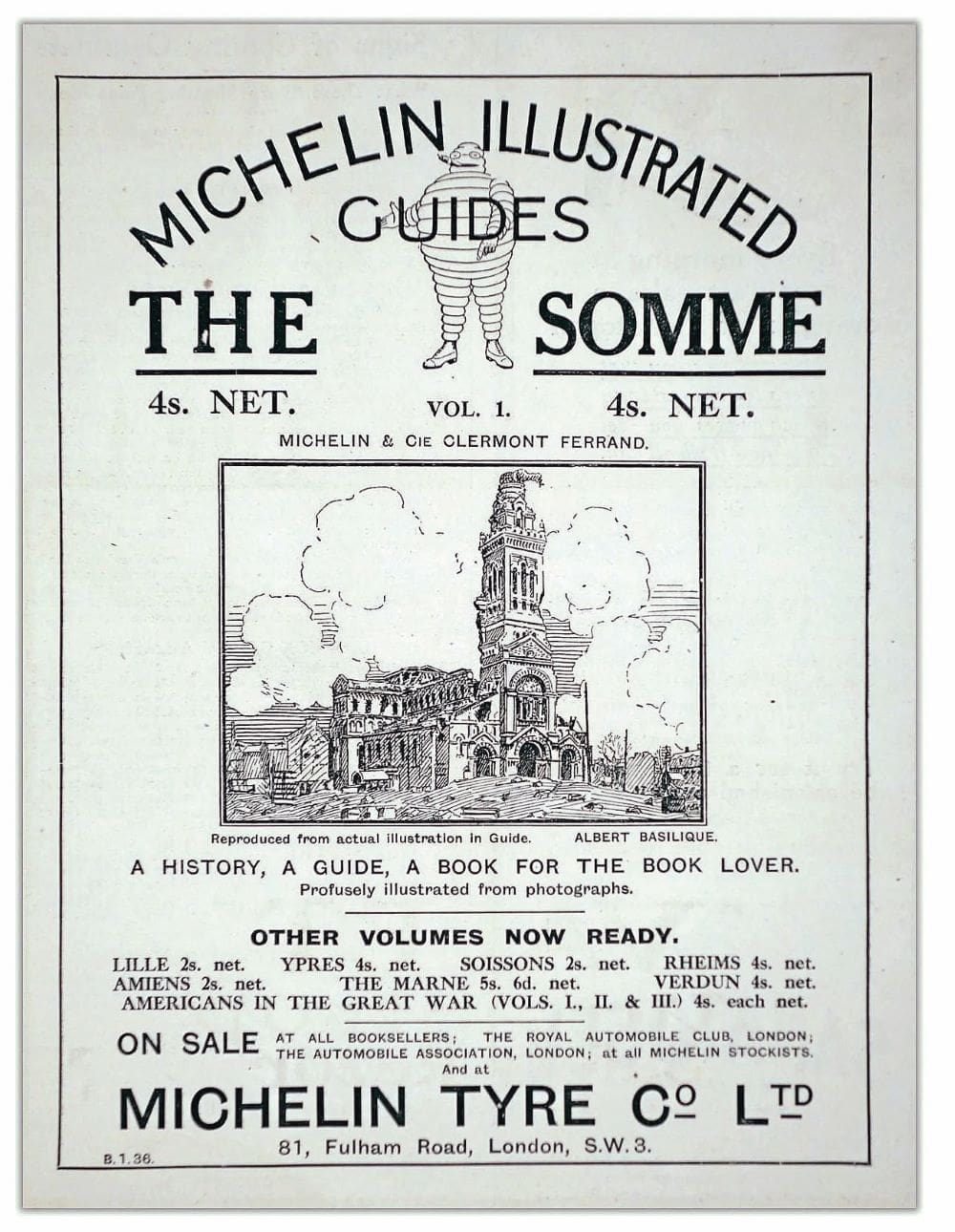

The modern version contains much more information than the original, being produced to suit the modern tourist rather than someone keen to look at the region of military engagement without getting blown up. Consequently, it lists over 150 places of interest to visit, and has expansive lists of accommodation and eating establishments including, naturally, Michelin-starred restaurants.
Now, Michelin restaurants are, to be frank, out of the reach of us ‘normal’ motorcyclists and perhaps a little too high class as well, but you also need to bear in mind that Michelin doesn’t just recommend its ‘star’ restaurants, but numerous other establishments too, including restaurants that are within a sensible budget, and appropriate accommodation too.
The guide also serves as a historical reference tool as well, with re-printed original documents of the time alongside more contemporary reports.

Tyres: We chose the Michelin Power 6 for the Hayabusa, and the Road 6 for the SV. The Power 6 is the sportier option, which seems sensible for the Busa’s potential, and more than capable of coping with track day use as well as the conventional riding that we put it to, while the Road 6 on the SV is a super all-round road tyre.
Initially, I had thought that the Hayabusa’s Power 6 may be a little too focused for the touring approach that we had to our foray into northern France, especially when I saw that the weather forecast was suggesting that we’d be experiencing wet conditions.
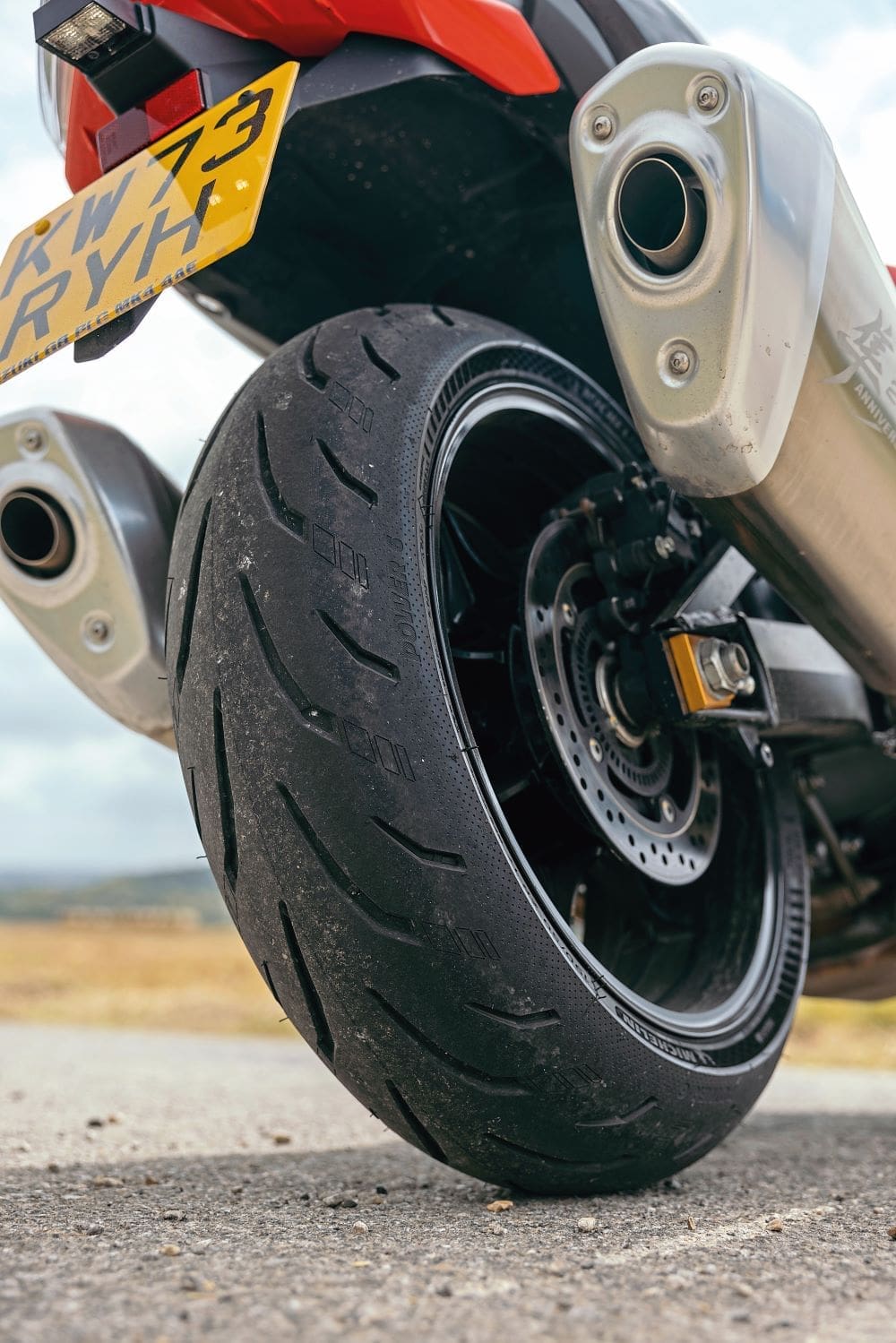
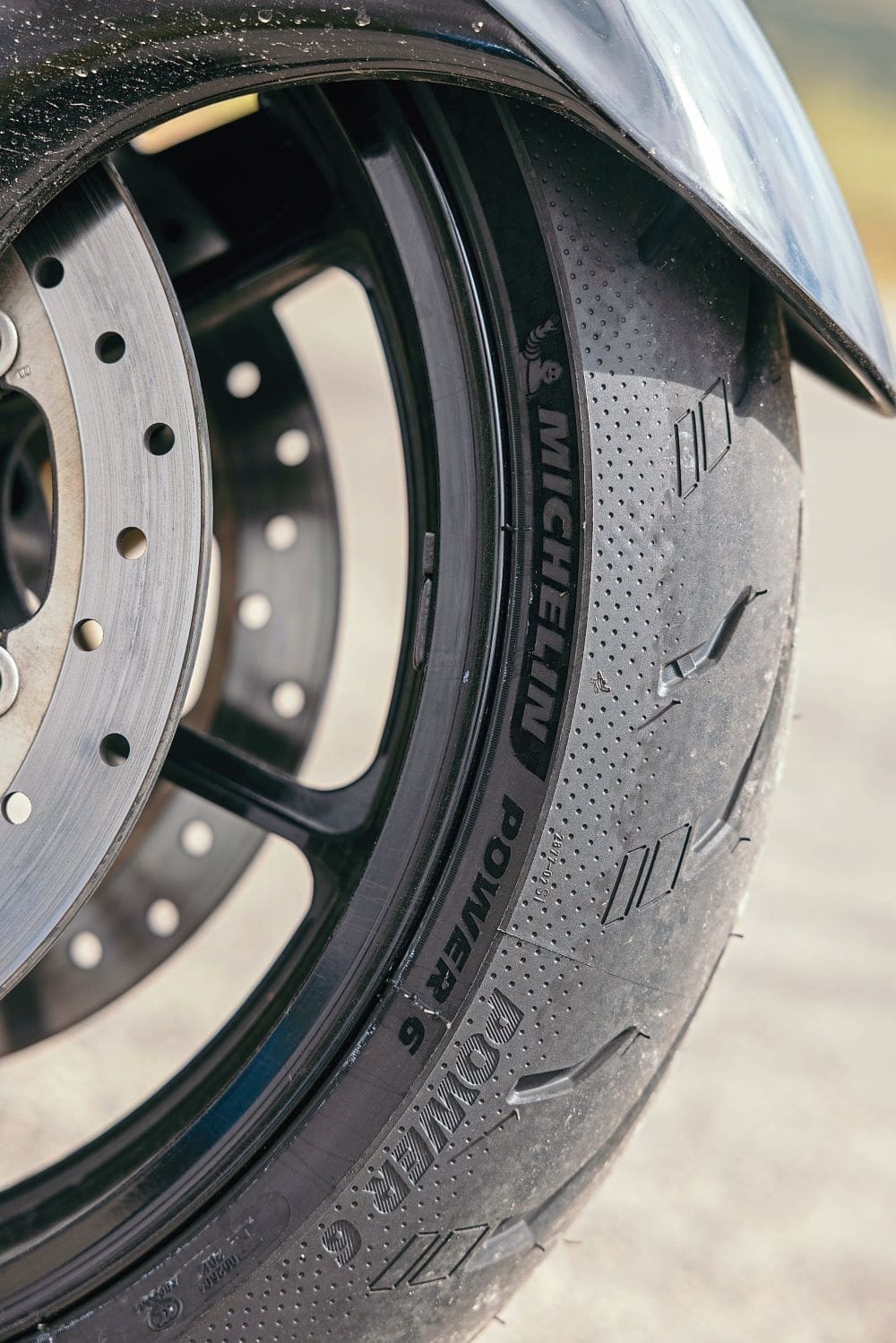
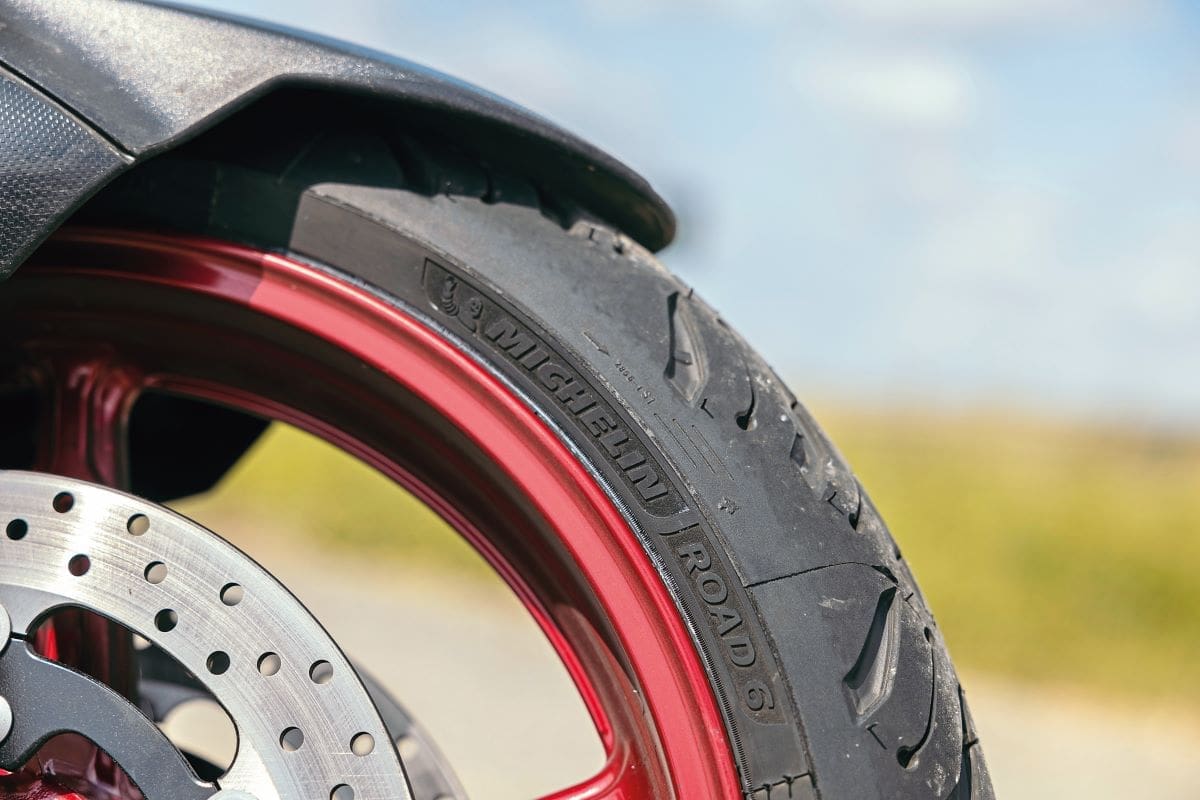
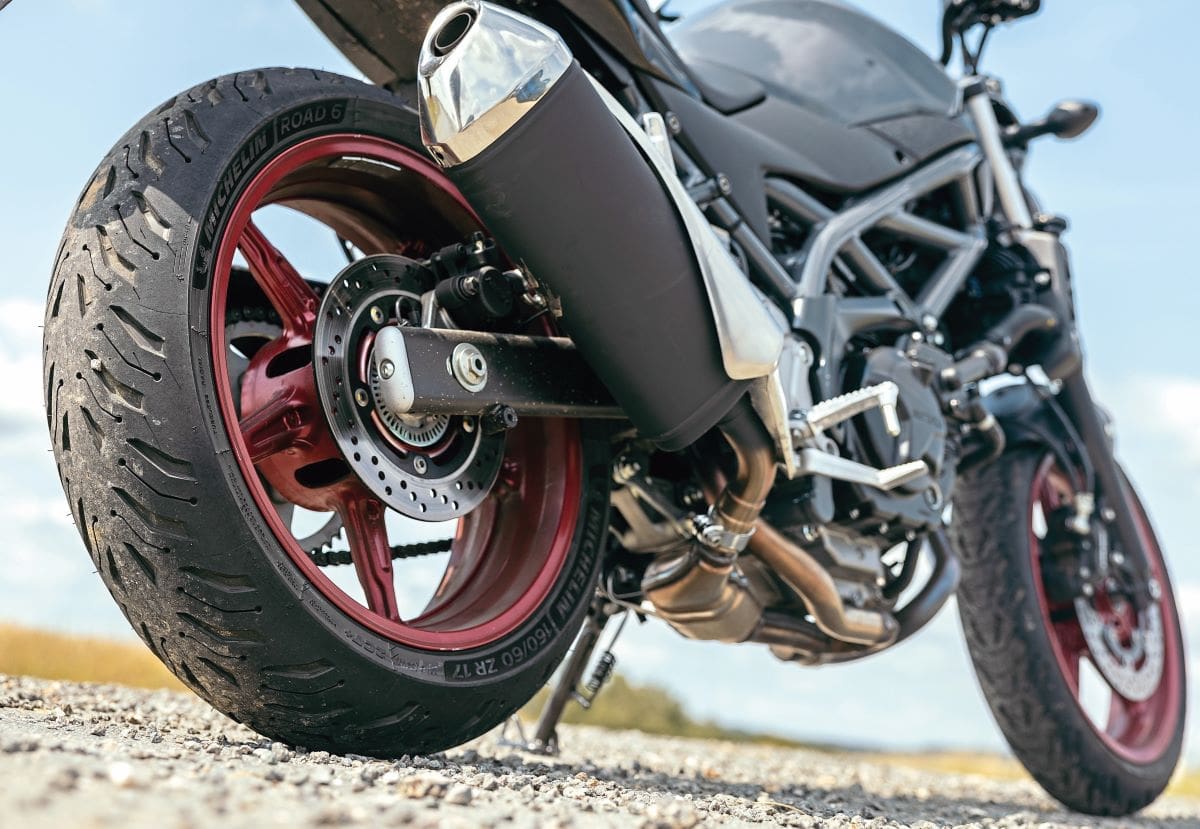
As luck would have it, we saw little in the way of actual rain but did travel on some wet roads – much like at home in the UK, this part of Europe experiences very mixed weather conditions and doesn’t have the near-guaranteed sunshine of the Mediterranean coast. But with just a couple of days available we didn’t have the time to travel further, and as it happens, nor did we need to.
Even on those wet roads, the Power 6s worked impeccably, without slip or slide or any feeling of nervousness. And when the clouds thinned and the sun peeked out, there was grip and feedback in abundance.











